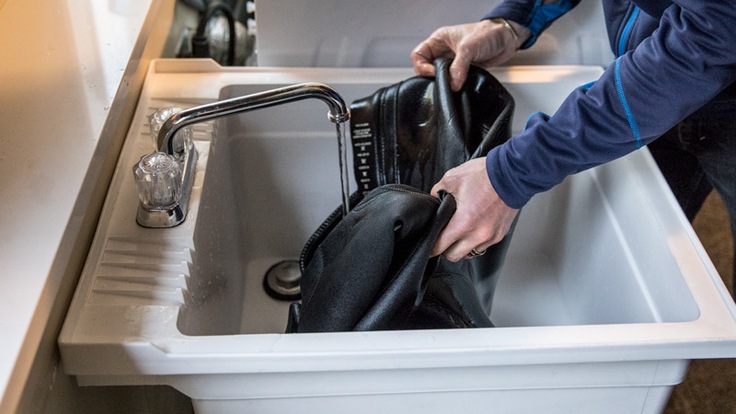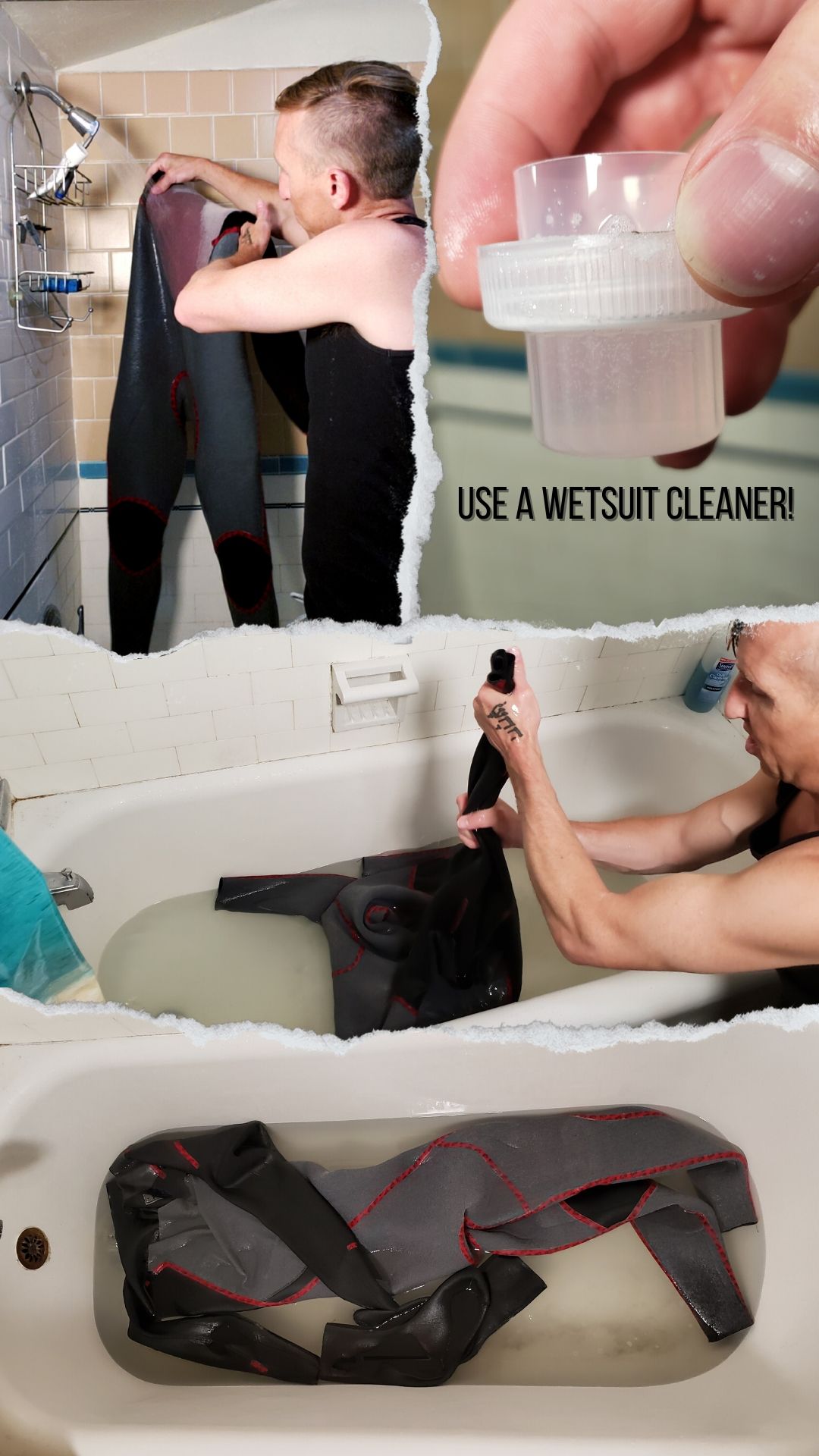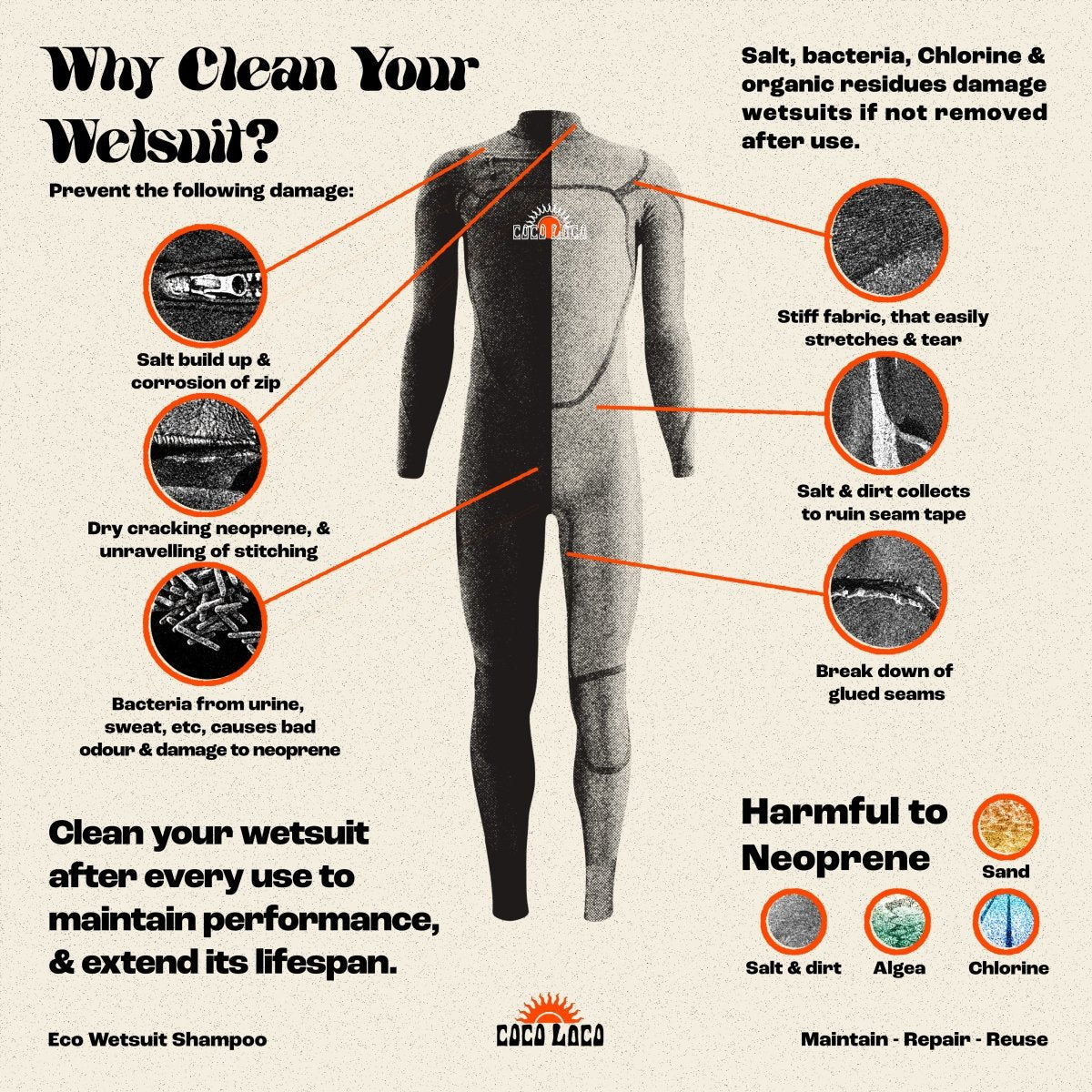To wash a neoprene wetsuit, hand wash with mild detergent and cold water, avoiding harsh chemicals or machines. Keeping the wetsuit clean preserves its material integrity and extends its lifespan.
Proper care can also prevent odor and bacteria buildup, ensuring a comfortable and hygienic experience. Maintaining a regular cleaning routine for your neoprene wetsuit will help it perform optimally during water activities, such as surfing or diving. Let’s explore the simple steps you can take to clean your neoprene wetsuit effectively, allowing you to enjoy your favorite water sports with confidence and comfort.
Table of Contents
Materials Needed
In order to properly wash your neoprene wetsuit, you will need to gather a few essential materials. Below is a list of the materials you will need:
Mild Detergent
Select a mild detergent that is gentle on the neoprene fabric to avoid any damage.
Soft Bristle Brush
Use a soft bristle brush to gently remove dirt and debris from the wetsuit without causing any tears or damage.
Large Tub Or Container
Prepare a large tub or container to soak the wetsuit fully, ensuring it can move freely for effective cleaning.
Preparing To Wash
When it comes to keeping your neoprene wetsuit clean and in optimal condition, proper washing is essential. Before diving into the cleaning process, it’s important to prepare your wetsuit to ensure a thorough and effective wash. Taking a few simple steps prior to washing can help preserve the quality and longevity of your wetsuit, so let’s get started with preparing to wash your neoprene wetsuit.
Turn Wetsuit Inside Out
Turning your wetsuit inside out before washing is crucial, as it allows for better access to the interior for cleaning. To do this, carefully turn the wetsuit inside out, ensuring that the entire interior surface is exposed. This step is vital for removing salt, sand, and other debris that may have accumulated inside the wetsuit during use.
Check For Tears Or Damage
Prior to washing, it’s important to carefully inspect your wetsuit for any tears, punctures, or signs of damage. Carefully examine the seams, zippers, and material for any visible issues. If you notice any tears or damage, it’s best to address these concerns before proceeding with the washing process to prevent further deterioration.
Hand Washing Method
When it comes to maintaining your neoprene wetsuit, hand washing is a gentle and effective method to ensure its longevity and performance. By following the proper steps, you can safely clean your wetsuit without causing any damage to the material.
Fill Tub With Cool Water
To begin the hand washing process, fill a clean bathtub or large container with cool water. Ensure the water is at a comfortable temperature and not too warm, as hot water can damage the neoprene material.
Add Detergent And Submerge Wetsuit
After filling the tub, add a small amount of neoprene-specific wetsuit detergent or a mild, gentle detergent that is suitable for delicate fabrics. Then, submerge the wetsuit fully into the water, ensuring it is evenly distributed and not bunched up in any areas. Avoid using bleach, harsh chemicals, or fabric softeners, as they can degrade the neoprene material.

Credit: www.rei.com
Cleaning The Wetsuit
Cleaning the Wetsuit:
Gently Scrub With Soft Brush
Begin by using a soft brush to scrub the entire surface of the neoprene wetsuit gently.
Focus On Particularly Dirty Areas
Pay special attention to areas that are especially dirty or stained for thorough cleaning.
Rinsing And Drying
When it comes to washing your neoprene wetsuit, properly rinsing and drying it is crucial to maintaining its quality and prolonging its lifespan. After enjoying your time in the water, it’s essential to take care of your wetsuit to ensure it stays in top condition for future use. Let’s dive into the important steps for rinsing and drying your neoprene wetsuit.
Thoroughly Rinse With Fresh Water
After using your wetsuit, rinse it with fresh water as soon as possible. Use a hose or a bucket of clean water to remove any salt, sand, or debris that may have accumulated during your water activities. Gently squeeze and fold the wetsuit to allow the water to flow through it, ensuring that all areas are thoroughly rinsed.
Hang To Dry In The Shade
Once properly rinsed, it’s time to hang your wetsuit to dry. Find a well-ventilated area away from direct sunlight – hanging the wetsuit in the shade will prevent damage to the neoprene. Use a wide, padded hanger to avoid leaving creases in the material. Allow the wetsuit to air dry completely before storing it. Never use a dryer or expose your wetsuit to direct heat, as this can cause damage and deterioration.
Storage Tips
Learn how to properly wash your neoprene wetsuit with these helpful storage tips. Discover step-by-step instructions for cleaning and maintaining your wetsuit to extend its lifespan and ensure optimal performance in the water.
Properly storing your neoprene wetsuit is essential for prolonging its lifespan and maintaining its functionality. Follow these storage tips to ensure that your wetsuit stays in top condition:
Ensure Wetsuit Is Completely Dry
Before storing your neoprene wetsuit, it is crucial to ensure that it is completely dry. Excess moisture can lead to mold and unpleasant odors. To dry your wetsuit:
- Gently squeeze out any excess water from your wetsuit.
- Hang it up using a wide, padded hanger, making sure it is not stretched or crumpled.
- Place it in a well-ventilated area, away from direct sunlight and heat sources.
- Leave it to air dry completely. This may take several hours, depending on the humidity.
Remember to turn your wetsuit inside out midway through the drying process to ensure both sides dry thoroughly.
Avoid Folding Neoprene
Neoprene material can develop permanent creases if folded for an extended period. To avoid creasing and maintain the shape of your wetsuit:
- Store your wetsuit flat, either on a clean surface or using a dedicated wetsuit hanger that supports its shape.
- Avoid hanging it from the shoulders, as this can stretch the material over time.
- If necessary, fold the wetsuit following the natural seams or joints to minimize creasing.
Never store your wetsuit in a compact or tightly packed space, as this can lead to creases and damaging the neoprene.
Maintenance And Care
Proper maintenance and care of your neoprene wetsuit is crucial to ensure its longevity and functionality.
Avoid Sunscreen Contact
Avoid using sunscreen directly on your neoprene wetsuit to prevent damage to the material.
Regularly Inspect For Wear And Tear
Regularly check your wetsuit for any signs of wear and tear to address any issues early.

Credit: blog.wetsuitwearhouse.com

Credit: www.coco-loco.co
Frequently Asked Questions
Can Neoprene Be Machine Washed?
Yes, neoprene can be machine washed. Use a mild detergent and cold water, then air dry to maintain its quality.
How To Clean A Stinky Wetsuit?
To clean a stinky wetsuit, soak it in a mixture of water and wetsuit shampoo. Scrub gently and rinse thoroughly with freshwater. Hang to dry in a shaded area. Avoid using harsh chemicals to maintain the wetsuit’s longevity.
Can I Use Dawn To Wash My Wetsuit?
Yes, you can use Dawn to wash your wetsuit. It is effective in removing dirt and grime, leaving your wetsuit clean and fresh. Remember to rinse thoroughly afterwards.
How Do You Clean And Disinfect Neoprene?
To clean and disinfect neoprene, mix mild soap with water. Gently scrub the neoprene and rinse thoroughly. Use a disinfectant spray and let it dry. Avoid harsh chemicals and direct sunlight. Proper cleaning and disinfecting will maintain the quality and longevity of your neoprene products.
Conclusion
Mastering the proper cleaning techniques for your neoprene wetsuit is essential for maintaining its longevity and performance. By following the steps mentioned in this guide, you can ensure that your wetsuit stays in top condition and ready for your next aquatic adventure.
Keep these tips in mind to keep your wetsuit clean and in excellent shape for many dives to come.
